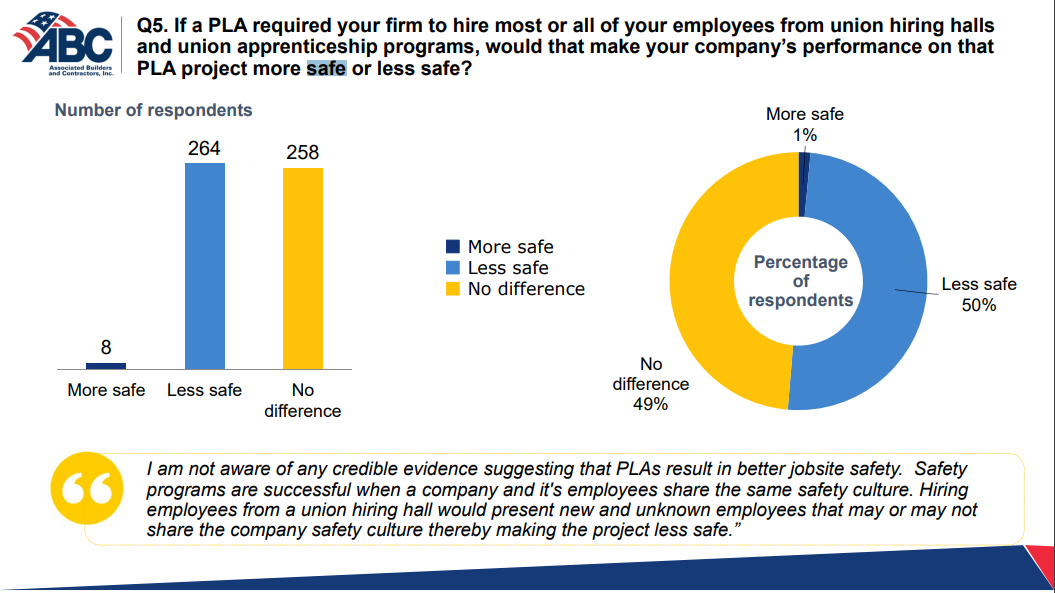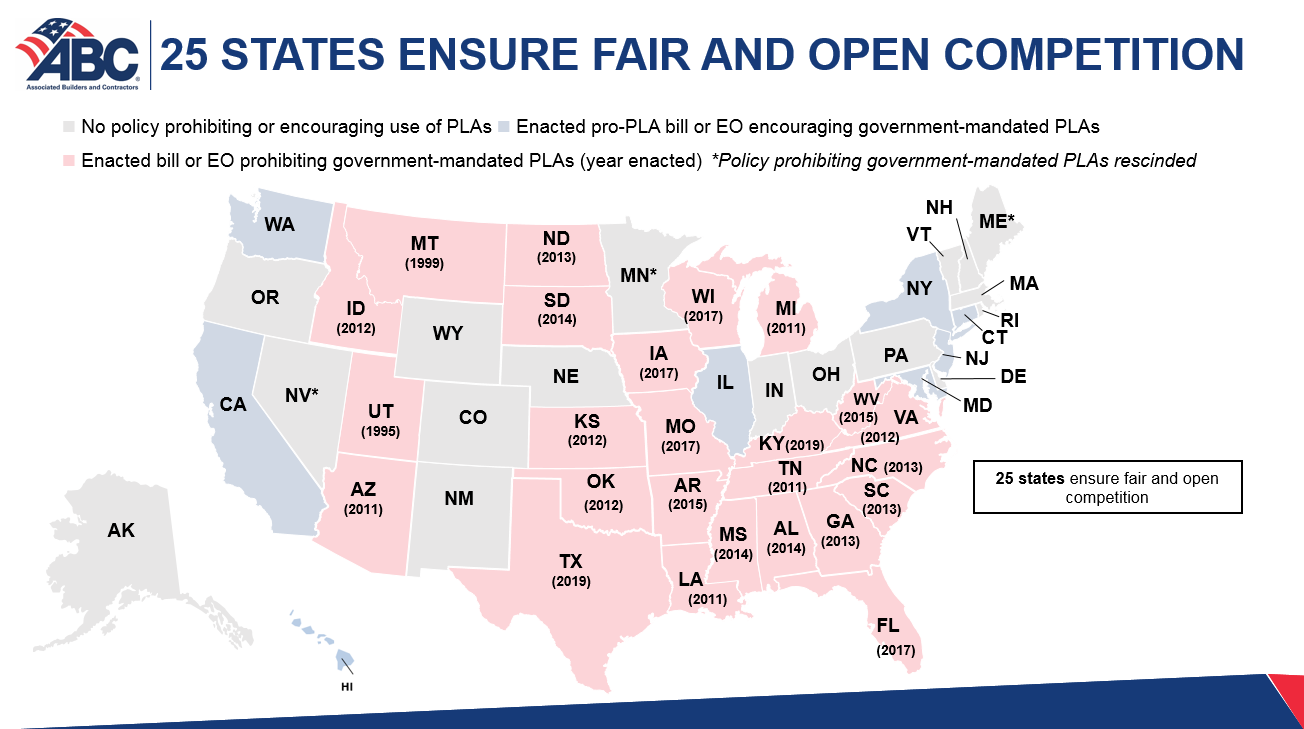Setting the Record Straight: Do Government-mandated Project Labor Agreements Really Improve Safety Performance?
Supporters of government-mandated project labor agreements often claim these controversial schemes ensure the safe delivery of construction projects, and therefore, it’s in the public interest for lawmakers to mandate PLAs on construction projects funded by hardworking taxpayers, resulting in reduced competition from local firms, increased construction costs by 12% to 20%, and fewer local construction jobs and infrastructure projects.
These safety claims have even made their way into policy prescription. President Obama’s 2009 Executive Order 13502, which remains in place today, promotes the use of government-mandated PLAs on federal construction projects exceeding $25 million in total costs because they allegedly promote compliance with safety regulations, amongst other provisions.
Such federal policy and similar executive orders and laws pushed by PLA advocates in state and local governments across the country are flawed and based on unfounded claims.
For example, a 2019 survey of ABC members found that a nearly unanimous 99% of respondents said the typical PLA requirements that contractors must hire most or all of their employees from union hiring halls and union apprenticeship programs would make jobsites less safe or have no impact on the safety outcomes on such jobsites, an overwhelming rebuke of claims that government-mandated PLAs lead to safer projects.

The truth is contractors are already required to follow all applicable federal, state and local safety regulations whether a project is built with or without a government-mandated PLA.
Construction superintendents and others responsible for jobsite safety are required to comply with safety regulations that are constantly being issued and updated by the U.S. Department of Labor’s Occupational Safety and Health Administration. Many states also have state and local workplace safety regulations that may be more expansive than federal OSHA regulations, and these also must be followed as a condition of complying with a government contract. These measures remain in place on jobs built with and without government-mandated PLAs.
Many construction contractors have additional internal company safety plans and in-house safety departments and rely on third-party experts and external safety professionals to bolster jobsite safety as part of their comprehensive workforce development efforts. Toolbox talks, task-specific safety processes, and implementing a substance abuse program are additional measures voluntarily utilized on jobsites to work toward zero-incident construction jobsites.
In fact, government data does not support claims made by advocates that PLA mandates result in safer contracts.
The U.S. Bureau of Labor Statistics is the federal agency tasked with calculating and reporting workplace injuries, which is primarily performed through the BLS Survey of Occupational Injuries and Illnesses and the BLS Census of Fatal Occupational Injuries. The SOII includes data on total recordable incident rates (TRIR) and days away, restricted or transferred rate (DART) in the construction industry. The number is represented as the number of injuries and illnesses per 100 full-time equivalent workers.
Although there are a handful of states that did not report data in 2019, the latest year of available data provides a comparison of the incident rate in the construction industry between states with laws prohibiting government-mandated PLAs and states that promote or permit government-mandated PLAs. The findings undermine arguments that government-mandated PLAs create safer jobsites. Data shows that states with laws prohibiting government-mandated PLAs averaged a lower level of total recordable incidents, with an average of 2.4, while states that allow and encourage government-mandated PLAs averaged 3.5 total recordable construction incidents.

These numbers demonstrate that project safety is much more nuanced than simply the existence or non-existence of a government-mandated PLA. To that end, Associated Builders and Contractors has implemented a program that helps contractors improve jobsite safety called the STEP Safety Management System. STEP measures how much leading indicators—proactive injury and hazard elimination tools on the jobsite—improve safety performance.
ABC’s Safety Performance Report captures data on nearly a billion hours of construction work from STEP participants and identifies the best practices and core leading indicators that had the biggest impact on safety performance. In 2019, those included the use of personal protective equipment, a robust substance abuse program, pre-planning for project safety and employee participation in safety reporting and processes, among others. The findings of ABC’s Safety Performance Report show that safety processes and planning are the keys to project safety. Top-performing STEP companies achieved incident rates 827% safer than the BLS industry average in 2019 by focusing on world-class safety through a company-wide commitment to safety as a core value. Creating a company safety culture and formal process for tracking these leading indicators and acting on them has produced positive and meaningful safety outcomes, unlike the disingenuous claims made by special interests lobbying federal, state and local government agencies to mandate PLAs on public construction projects.
In addition to data, there have been examples of unfortunate accidents and safety issues on government-mandated PLA projects, which suggests that government-mandated PLAs cannot guarantee the safe delivery of a construction project.
The next time you hear lawmakers or PLA proponents assert that government-mandated PLAs make jobsites safer, or that the passage of laws prohibiting government-mandated PLAs would jeopardize worker safety, show them these facts and data points.











